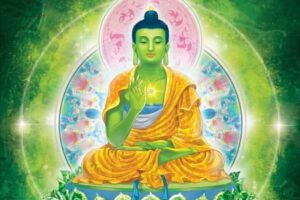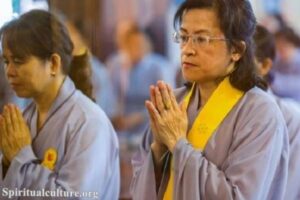Mahayana Buddhism is one of the two major traditions of Buddhism, along with Theravada Buddhism.
Mahayana Buddhism is believed to have emerged in India around the 1st century CE. It is thought to have arisen as a response to certain interpretations of the early Buddhist teachings, and a belief in the possibility of universal enlightenment and Buddhahood for all beings characterizes it.
Mahayana Buddhism spread from India to other parts of Asia, becoming the dominant form of Buddhism in East Asia, including China, Japan, Korea, Taiwan, and Vietnam. Mahayana Buddhism developed several different schools and traditions in these countries, each with unique teachings and practices.
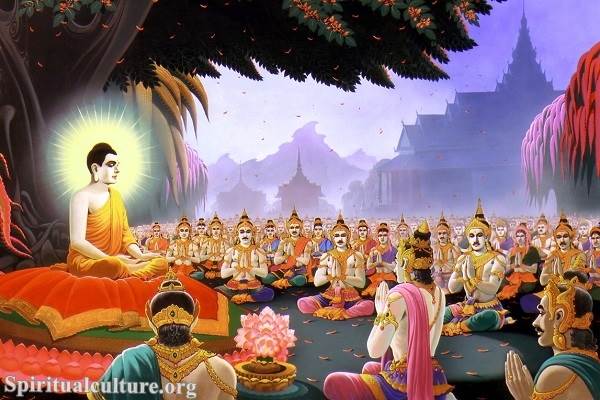
Today, Mahayana Buddhism is practiced by most Buddhists in East Asia and has spread to other parts of the world, including the West. It continues to be an important and influential tradition within Buddhism.
Belief in universal enlightenment and the possibility of Buddhahood for all sentient beings is characteristic of Mahayana Buddhism.
Mahayana Buddhists believe that the path to enlightenment involves cultivating compassion and altruistic behavior towards all beings and engaging in spiritual practices such as meditation and studying Buddhist teachings.
The Mahayana tradition also emphasizes the role of bodhisattvas, beings who have attained a high level of spiritual development but who postpone their final enlightenment to help others achieve enlightenment. Mahayana Buddhism is practiced by most Buddhists in East Asia, including in China, Japan, Korea, Taiwan, and Vietnam.
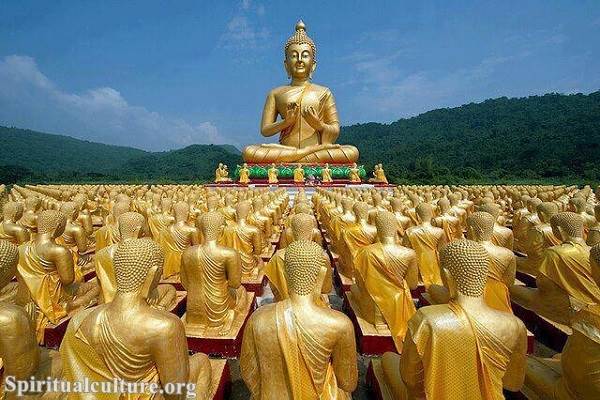
Mahayana Buddhism is known for its emphasis on the bodhisattva path, in which practitioners aim to become bodhisattvas and work toward the enlightenment of all beings. A bodhisattva is a being who has attained a high level of spiritual development and can postpone their final enlightenment to help others achieve enlightenment. The bodhisattva vow is a commitment to work towards the enlightenment of all beings, even if it means delaying one’s enlightenment.
Mahayana Buddhism also emphasizes the concept of the “true self,” which is believed to be the ultimate nature of all beings and seen as beyond the ego or the individual self. This concept is often associated with the Mahayana teaching of emptiness, which holds that all phenomena are empty of inherent existence and are instead interdependent and interconnected.
The Mahayana tradition also includes several different sutras, or sacred texts, which are considered to be the teachings of the Buddha. Some of the most well-known Mahayana sutras include the Lotus Sutra, the Diamond Sutra, and the Heart Sutra. Mahayana practitioners often studied and meditated upon these sutras to cultivate insight and understanding of the Buddha’s teachings.
Mahayana Buddhism emphasizes compassion, altruism, and the cultivation of spiritual practices to attain enlightenment and benefit all beings.
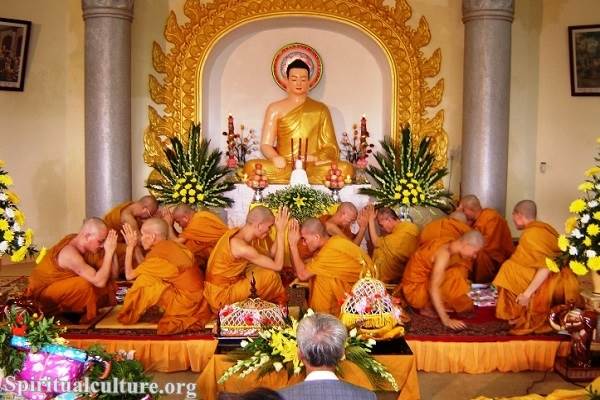
Mahayana Buddhism is known for its wide range of practices and teachings, which have developed over time and vary among schools and traditions. Some common practices in Mahayana Buddhism include:
– Meditation: Meditation is a central practice in Mahayana Buddhism and is seen as a way to calm the mind and cultivate insight into the true nature of reality. There are many different forms of meditation in Mahayana Buddhism, including mindfulness meditation, Loving-Kindness meditation, and visualization practices.
– Study of the sutras: The sutras, or sacred texts, of Mahayana Buddhism, are considered to be the teachings of the Buddha. They are often studied and meditated upon to cultivate an understanding of the Buddha’s teachings.
– Chanting: Chanting is a common practice in Mahayana Buddhism and is often done in conjunction with meditation or as a standalone practice. Commonly chanted texts include the Heart Sutra, the Lotus Sutra, and the names of various buddhas and bodhisattvas.
– Prostrations: Prostrations are a physical devotion in which practitioners bow before a Buddha or Bodhisattva statue or image. This is seen as showing respect and devotion and cultivating humility.
– Offerings: Making offerings to the buddhas and bodhisattvas is another common practice in Mahayana Buddhism. These offerings may include incense, flowers, food, or other items and are seen as a way to show respect and gratitude.
– Cultivating compassion and altruism: Mahayana Buddhism emphasizes cultivating compassion and altruistic behavior toward all beings. This may involve engaging in activities such as volunteering, helping others, or practicing Loving-Kindness meditation.
Overall, Mahayana Buddhism offers a wide range of practices and teachings designed to help practitioners cultivate insight, understanding, and compassion and work toward all beings’ enlightenment.

